The old town of Nice blends the Riviera lifestyle with history and local culture. Here is a short guide to exploring its lively alleyways.
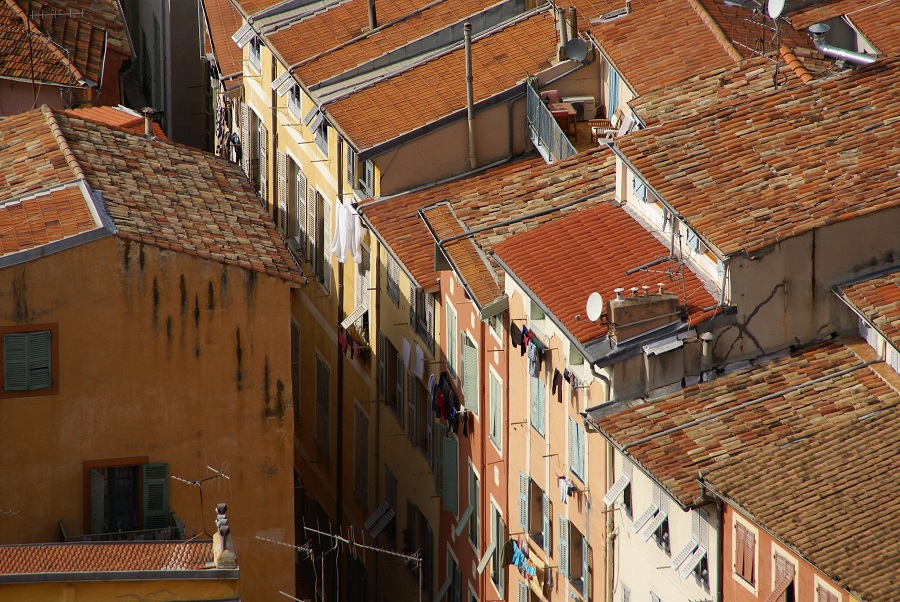
The buildings of old Nice from above (Photo: David Baron via Flickr / CC BY-SA 2.0)
Eclectic architecture and a cosmopolitan atmosphere are Nice’s most prominent outfit, helping to earn it UNESCO status as the original winter resort of the Riviera. But the old town was mostly untouched by those 19th-century transformations. The vieille ville offers glimpses of local culture predating tourism, along with an array of attractions for the modern-day visitor. Nightlife, regional cuisine, museums and traditional crafts are some of the highlights to look for while meandering its narrow streets and charming piazzas.
Before it passed on to France in 1860, Nice had long been associated with the neighbouring Italian regions. It was part of Liguria in Roman times, and an ally to Pisa and Genoa during the Middle Ages. In 1388, the city started a long (if intermittent) affiliation with the House of Savoy. That legacy is still evident in the old town, accounting for cultural and architectural traits hardly found in any other French city.
Things to do
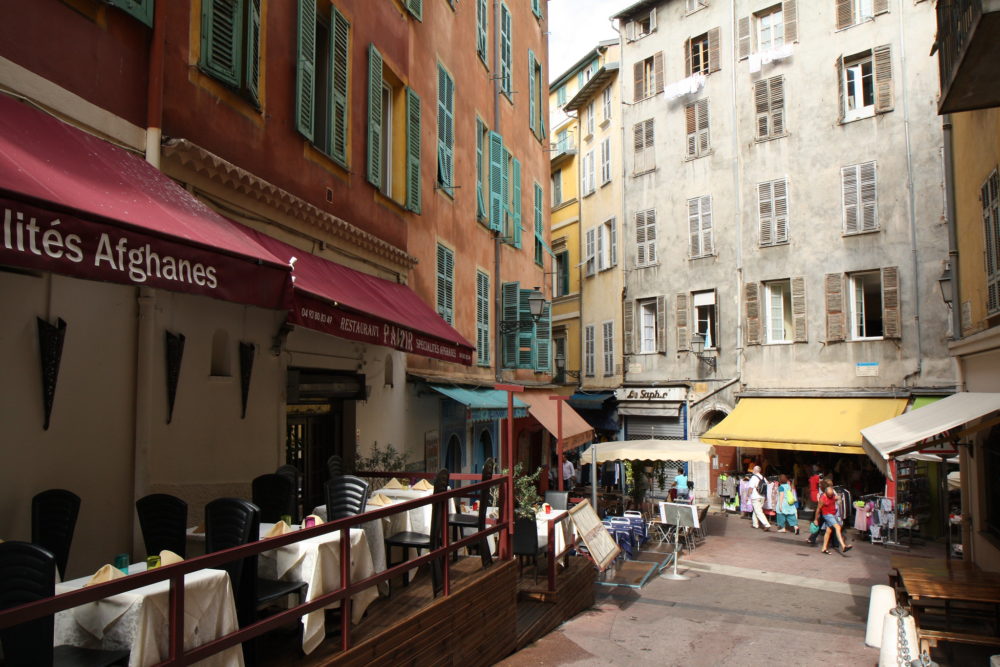
Approaching the old town (Photo: Olga Khomitsevich via Flickr / CC BY 2.0)
Paved with checked marble and skirted by porticos, the 19th-century Place Massena is an elegant entry point to the old town. The contrast between the two urban settings is quite dramatic. Within moments of leaving the square, a tangle of narrow streets awaits, inviting visitors to get lost, and to choose at every crossroads whether to follow the busier lane or the more secluded one.
Elements of both new and old Nice coexist in the Porte Fausee (Fake Gate) located along Boulevard Jean Jaurès. Coloured marbles and gilded vaults adorn this two-flight stairway, a symbolic and material connection between the ‘two cities’. The fountain it includes is said to be where local tripe butchers used to rinse their goods, back in the day when the area teemed with slaughterhouses. For a peek into those times, look for the old sign of a now-disappeared tripe shop nearby.
The narrow Rue Francis Gallo connects the gate to Place Rossetti. Sun-kissed tables of cafes and restaurants are laid out on the square around a small fountain, overlooked by the Cathédrale Sainte-Réparate. The Baroque façade of the cathedral echoes Roman 17th-century churches, while its lavishly-decorated interiors are rendered in a Genoese style.
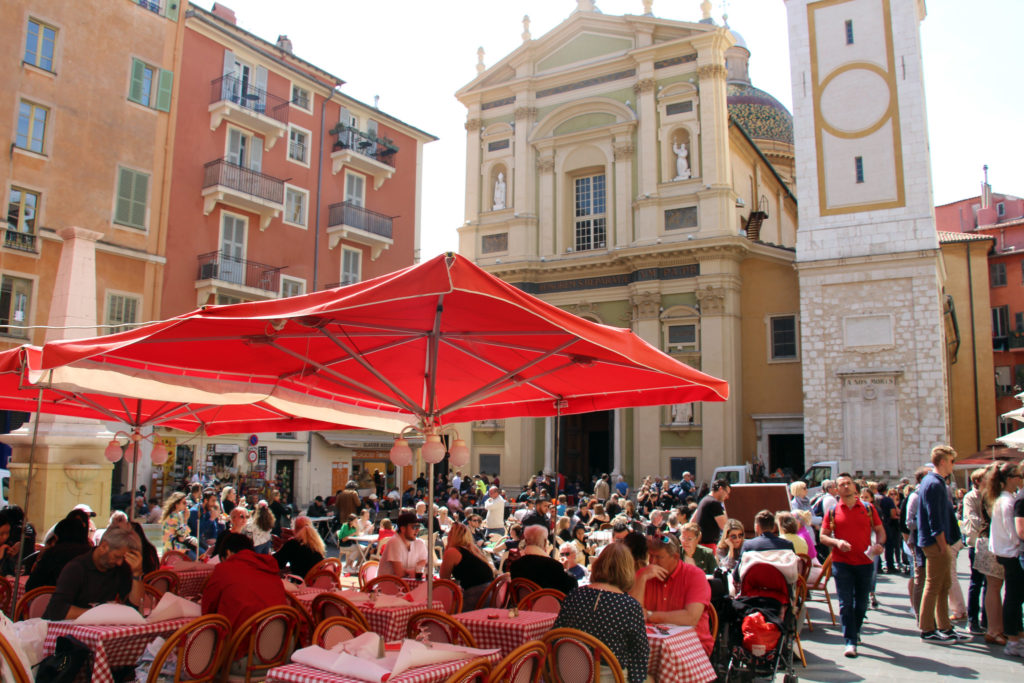
The cathedral overlooking Place Rossetti (Photo: Fred Romero via Flickr / CC BY 2.0)
Other notable examples of Baroque architecture in Nice are the Turin-style Èglise du Gesù and the typically Genoese Palais Lascaris, the latter being home to an impressive collection of artworks, fabrics, period furniture and over 500 musical instruments. The palace stands on Rue Droite, one of the old town’s main arteries. Once the local salt road, it gradually became known for its art galleries. Among them, Galerie Ferrero opened in 1954 to become a reference point for local artists such as Klein, Arman and César.
These artists were leading figures of New Realism, which saw Nice as its home base during the 1960s. The relationship between this movement and American Pop Art is explored in depth by the Museum of Modern and Contemporary Art (MAMAC), housed in an impressive complex inspired by Neo-Classical principles. A more recent art institution is the Musée de la Photographie Charles Nègre, whose latest shows have included Vincent Munier, Nick Knight and Sebastião Salgado.
Other landmarks to seek out include the curious bas-relief of Adam and Eve (8 Rue de la Poissonnerie) and that of Catherine Ségurane (2 Pl. Saint-Augustin), a folk heroine who is said to have led the defence against the French-Turkish siege of 1543. The sumptuous Palais de la Préfcture, on the Cours Saleya, was once the palace of the Dukes of Savoy. Walk up the narrow stairs of the St Francois Tower to be rewarded with a rooftop view of the town. For an even broader perspective, climb up the hill where the city originated, la colline du Château, which is home to a park, a waterfall, an archaeological site and a belvedere with spectacular views over the Riviera.
Markets and Shopping
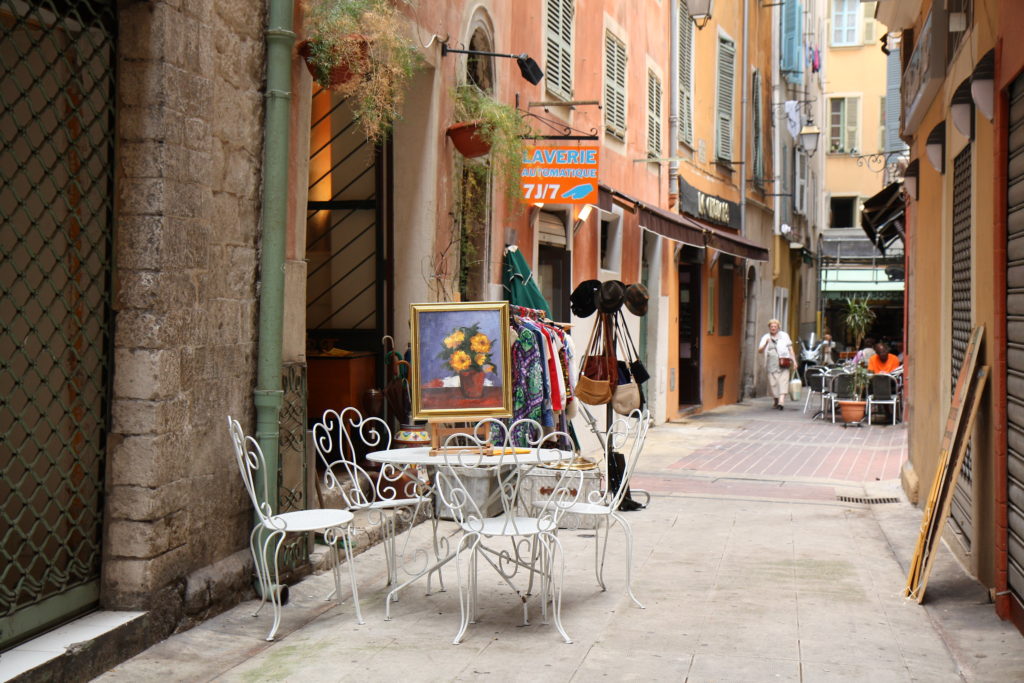
A boutique tucked away in an alley (Photo: Olga Khomitsevich via Flickr / CC BY 2.0)
Despite the obvious tourist vocation of Nice, dull souvenir stores in the old town play second fiddle to local independent boutiques and workshops. Head to Tresors Publics (11 Rue du Pont Vieux) for traditional gifts ranging from toys and stationery to crockery, or Maison Auer (7 Rue Saint-François de Paule) for a chocolate and candies dreamland. To dive into a historic wine cellar, try Caves Bianchi (7 Rue Raoul Bosio) or Cave Capiroglio (16 Rue de la Préfecture).
Many more shopping opportunities can be discovered while strolling around. Along Rue Pairoliere – whose residents include a roastery, a cheese shop and a variety of local butchers – the displays are particularly rich. At the foot of this narrow street, Place Saint‑François is home to the fish market and the former town hall (currently undergoing renovation works).
The Fish Market (Tue-Sun, 6am-1pm) is small but well worth a stop off, looking onto an area of the city that once belonged to Franciscan monks. But a more intense market experience awaits at Cours Saleya. This daily display (Tue-Sun, 6am-1.30pm) includes flowers, produce and crafts, celebrating local traders in a feast of scents and colours. Every Monday, the regular stalls give way to antiques and second-hand dealers (7am-6pm). The stand of Chez Thérésa is a particularly popular spot, dishing up freshly-baked socca.
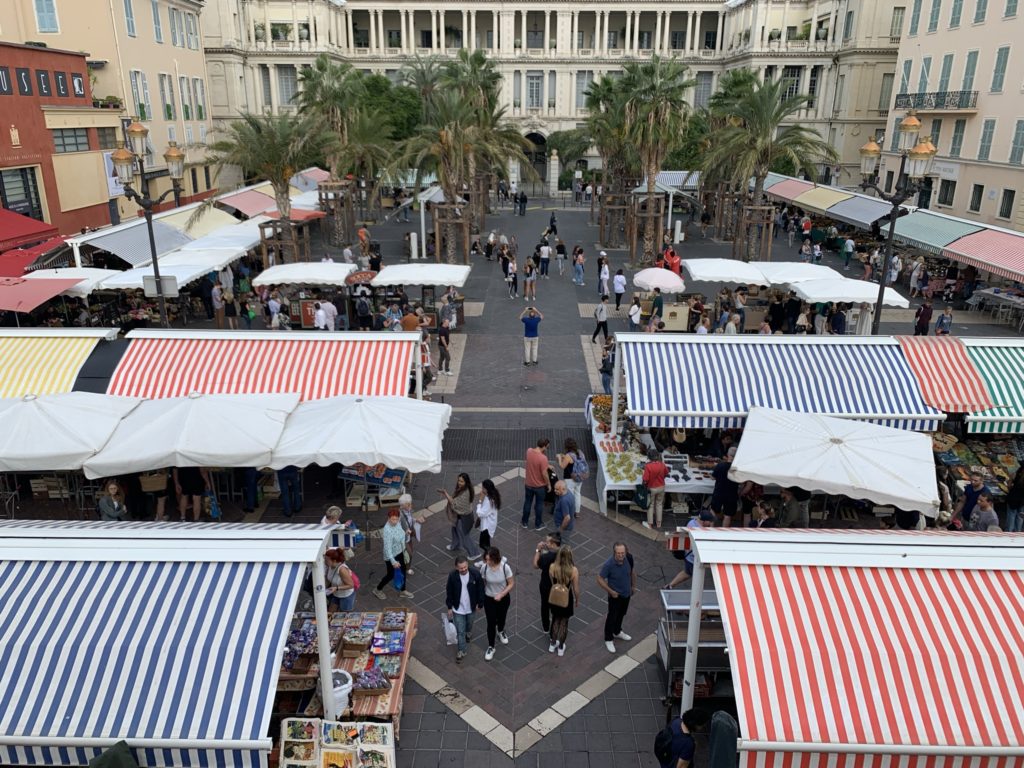
Cours Saleya Market (Photo: Andrea Gambaro for TravelMag.com)
Socca, a pepper-sprinkled pancake made from chickpea flour, epitomises the cultural ties between Nice and neighbouring Liguria (where the baked delicacy goes by farinata). Other local dishes shared with Ligurian cuisine include veggie pies, petit farcis (stuffed veggies), panisse and pissaladière (onion tart), while the succulent Nice-style daube (beef and wine stew) hails from Provencal traditions. Nicoise salad, merda de can gnocchi (‘dog poop’! – not literally), pan bagnat and tourte de blatte (sweet chard pie) are some of the other specialities. To try them all, look for the ‘Cuisine Nissarde’ label outside cafes and restaurants, which certifies the commitment to local products and traditional recipes.
Eat and Drink
A restaurant praised by locals and tourists alike, Lu Fran Calin (5 Rue Francis Gallo) promotes a no-nonsense approach to the regional cuisine. First-timers shouldn’t miss out on the lush platter of starters: a complete introduction to local staples such as panisse, socca, chickpea salad, stuffed veggies and more. Wine-marinated beef stew (daube) with gnocchi is also a popular option, although there’s plenty more on the menu to get tempted by. The interiors offer a modern tavern ambience, where the décor nods at old Nice. The outdoor seating is beside the cathedral, looking out on Place Rossetti. Follow your meal with tourte de blatte for a truly Nicoise experience.
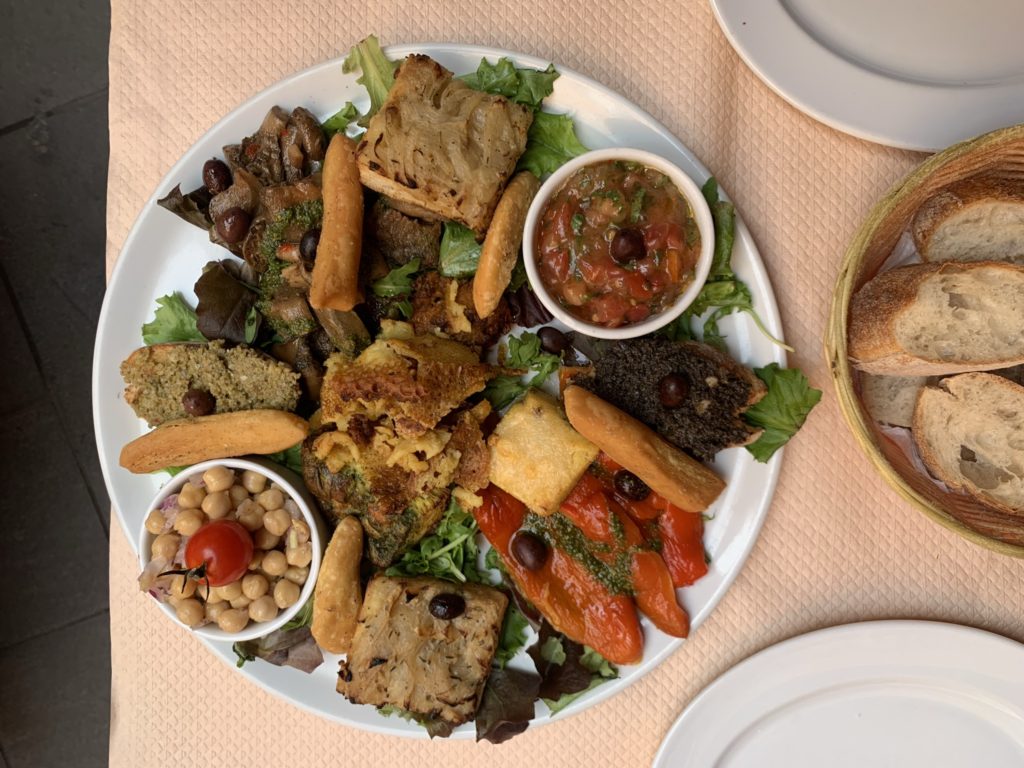
Mixed starters at Lu Fran Calin (Photo: Andrea Gambaro for TravelMag.com)
In the hands of the same family for four generations, Restaurant Acchiardo (38 Rue Droite) is another sure hit when it comes to local cuisine done by the book. Chef Virginie runs the same dishes her great-grandmother used to serve when the restaurant opened in 1927, while her brothers Jean-François and Raphaël are in charge of the floor. The menu features a wide range of certified Nicoise classics, alongside a rotating daily special. Wine is no longer produced on the premises as it used to be, but the excellent selection of bottles lives up to the house’s tradition. The original barrels from the wine-producing days displayed in one of the rooms make for a particularly charming setting. The restaurant is closed at weekends.
Socca is so popular in old Nice that trying different versions of it might be the best course of action. The one made at Chez Thérésa (28 Rue Droite) shouldn’t be missed. A wonderful wood oven turns the mixture of water and chickpea flour into a golden-brownish pancake, thin and crispy, as it should be. Other local delicacies such as pies and pizzas are available, ideal for a quick brunch or lunch break. A small cart rides back and forth to the nearby Cours Saleya Market, continuously delivering piping-hot socca to the shop’s stand. Dating back to 1925, Chez Thérésa is open Tuesday to Sunday until 3pm.
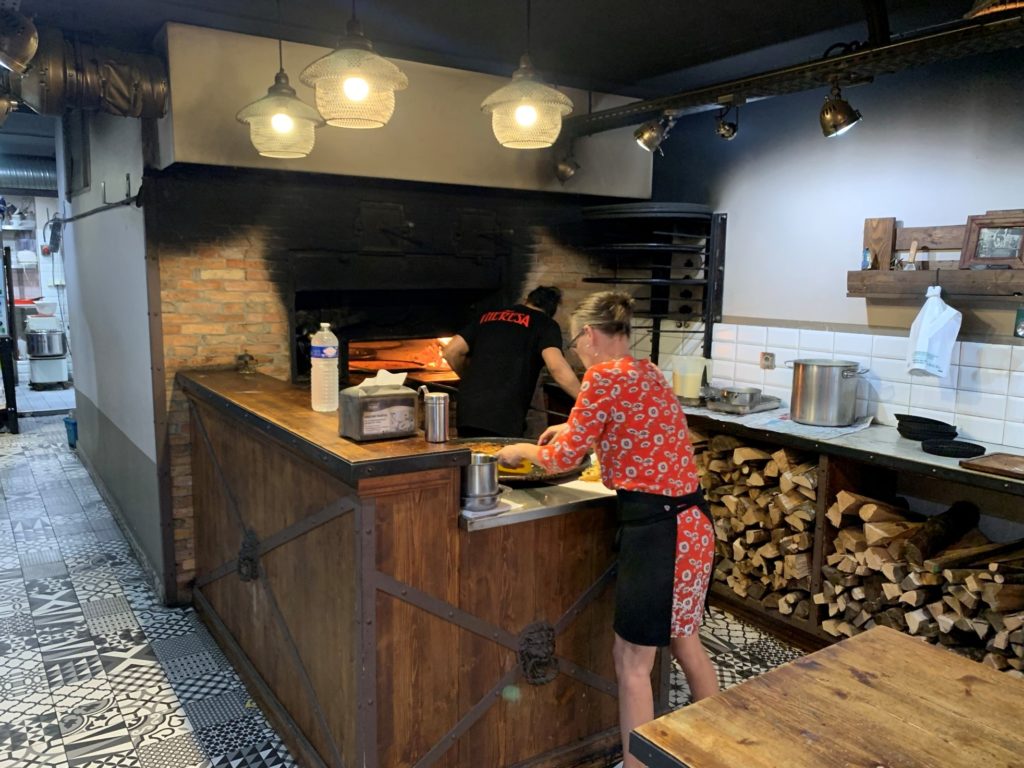
Making socca at Chez Thérésa (Photo: Andrea Gambaro for TravelMag.com)
Sentimi (2-4 Pl. Garibaldi) is an Italian restaurant with a Ligurian twist. The cheese focaccia list takes inspiration from the small town of Recco (some 200 km east along the coast), including the classic plain version as well as alluring variations. Trofie al pesto and Ligurian-style fish are also on the menu, alongside pizza and specialities from other Italian regions. Carefully-sourced ingredients take diners on a culinary journey across Italy, from Taggiasca olives to Bronte pistachios. An olive tree stands gloriously in one of the rooms as part of elegantly-designed interiors, while sunny Place Garibaldi backdrops the outdoor tables.
Les Folies d’Edmonde (16 Rue Benoît Bunico) offers refined yet unpretentious cocktails in the heart of the old town. Retro furnishing and pale colours lend effortless style to the interiors, while the vaulted stone ceiling downstairs creates an intimate and cosy atmosphere. The signature cocktail list is well-balanced, partial to fruity notes without shying away from a classy and sophisticated touch. A curated selection of regional wines is available, to be paired with platters of cheese and cold cuts. Events are occasionally held, including live music, stand-up, drag shows and burlesque.
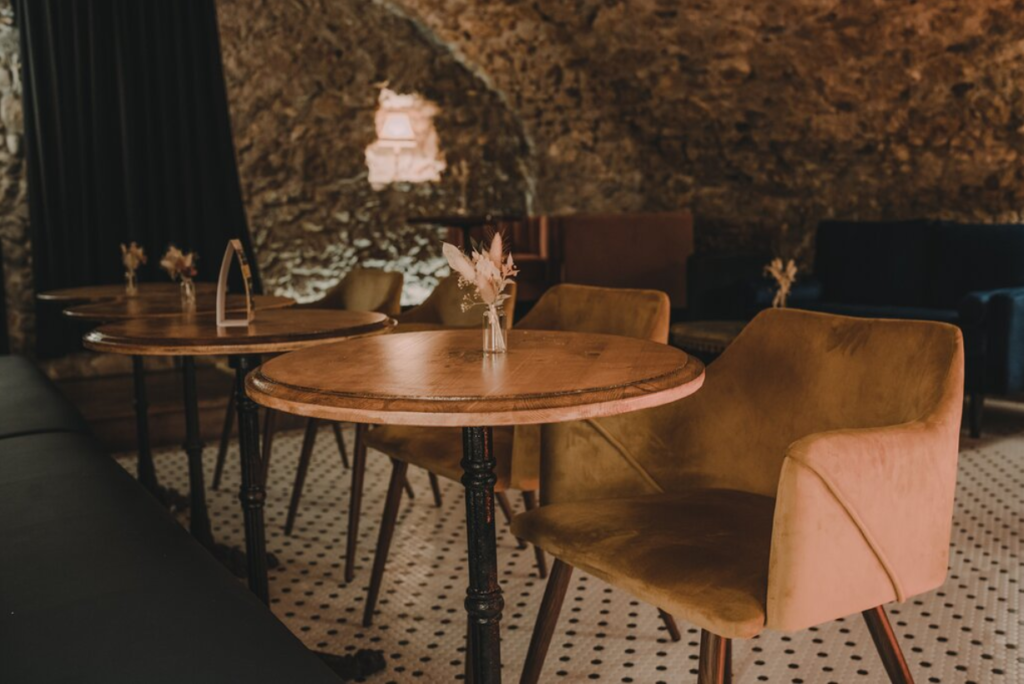
Les Folies d’Edmonde (Photo: Rudy Leduc via IG @rudy_graphie, courtesy of Les Folies d’Edmonde)
Where to stay
A long-established hotel in Nice, the Windsor Jungle Art Hotel (11 Rue Dalpozzo), has been committed to contemporary art since 1987. It is an ongoing project renewing itself every year, with prominent artists taking turns in reimagining the communal spaces through their work. Guests opting for an ‘artist room’ will immerse themselves in an actual art installation, while more traditional ‘fresco rooms’ are also available. The hotel hosts temporary exhibitions, as well as an annual international video art festival in late Autumn (OVNi, Objectif Vidéo Nice). Complete with a small swimming pool, the garden is a tropical-inspired shrine in the heart of Nice, only a ten-minute walk from the old town.
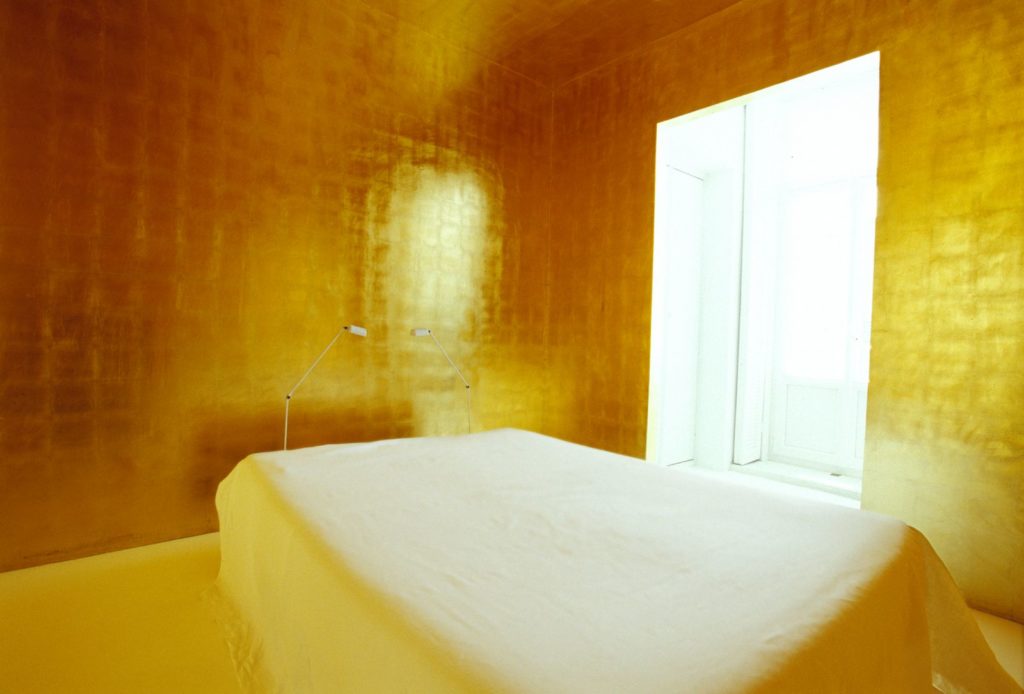
The ‘Golden Cube’ room, designed by Claudio Parmiggiani (Photo: courtesy of Windsor Hotel)
A tropical theme is also found at the Palm Hotel (8 Rue Maccarani). Warm pastel colours and a thoughtful design create a relaxing change of scenery from the urban setting, enhanced by organic materials. Some double rooms come with a 40 sqm terrace complete with coconut and palm trees, while the top-floor suite boasts two separate terraces. A rich selection of international rum is served at the bar. Opened in 2020, this young boutique hotel is located meters away from both the promenade and Place Massena.
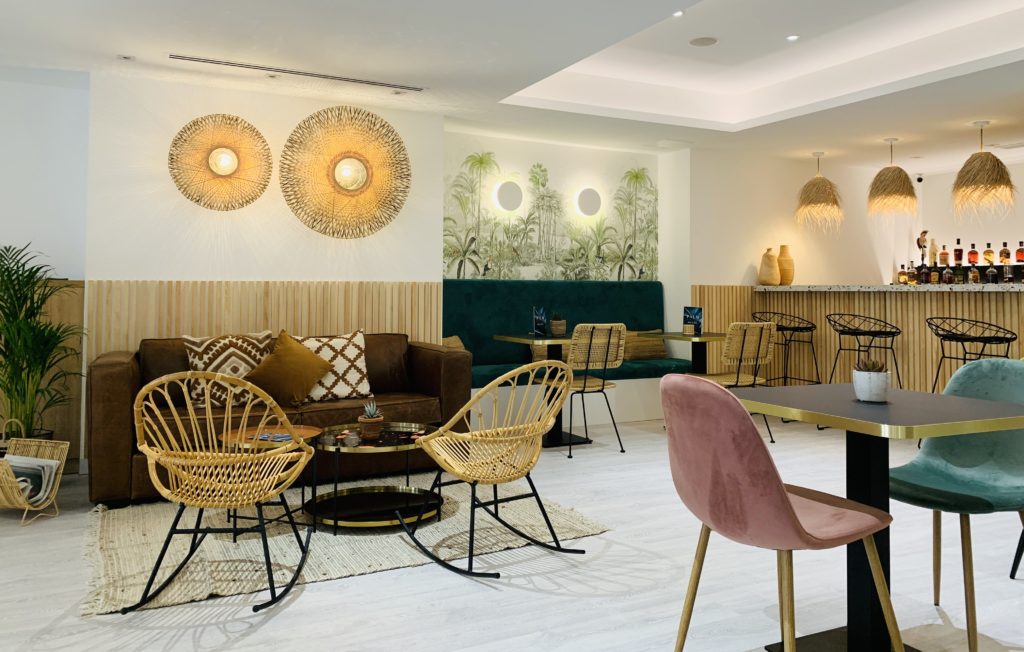
The lobby and bar at Palm Hotel (Photo: courtesy of Palm Hotel)
Right at the edge of the old town, L’Abeille (4 Rue Bonaparte) offers boutique apartments merging modern design and sustainable architecture. The nine options available can accommodate two to four guests. Each apartment features a unique style and layout, providing a range of atmospheres to choose from. The garden is a hidden gem of Nice’s history: as Napoleon sojourned next door in 1794, it is said that he used to meet here with the daughter of his host (apparently having to jump over the fence more than once not to get caught). This 700 sqm space has since been known as Bonaparte’s Garden, and access is exclusive to L’Abeille’s guests.